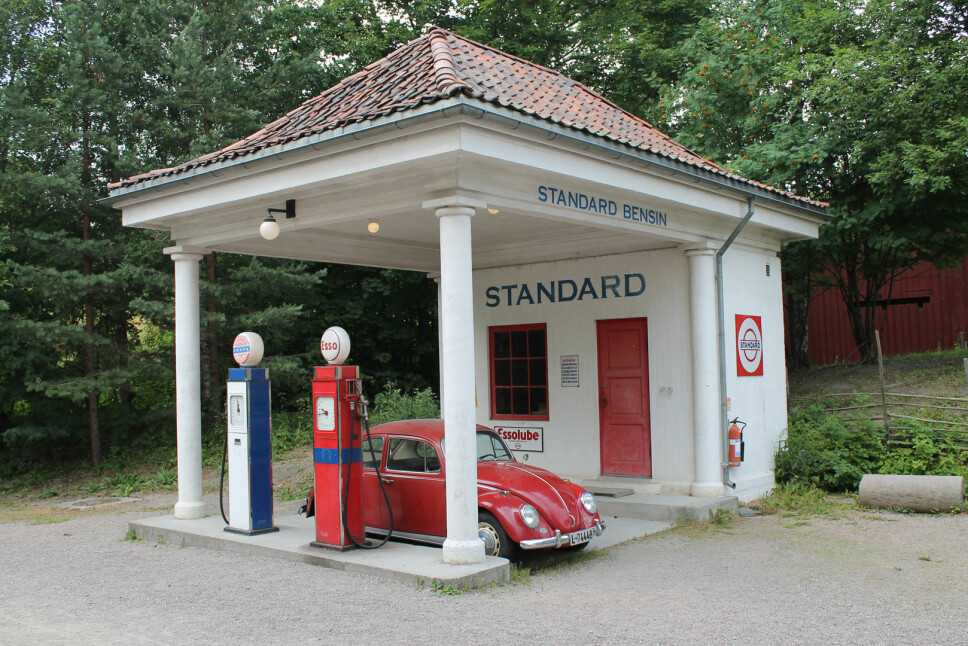
When Norwegian petrol stations looked like Greek temples
Old petrol stations evoke strong emotions.
“People are interested in old petrol stations, I think, because they let you travel back to your own childhood and youth,” says Morten Reiten to sciencenorway.no.
Reiten works as a consultant at the Norwegian Road Museum in Hunderfossen, near Lillehammer, and is among those who is most familiar with the history of Norwegian petrol stations, with a particular emphasis on the period from 1950-1970. He is now in the process of completing an academic article about how petrol stations in post-war Norway became synonymous with colourful brands and extensive service.
“Especially if you were young in the 1960s and 1970s, old petrol stations cause many people to feel nostalgic. You remember the petrol station from the village or town where you grew up. It was often where you met up with people,” he said.
A move to restore former splendour
Some Norwegian museums, local enthusiast associations and private individuals are renovating the country’s old petrol stations.
You will find them on Nøtterøy, in Kvinesdal, in Kongsberg, in Bergen, in Folldalen and at Fagernes. And a number of other places. The Facebook group Gamle Norske Bensinstasjoner (Old Norwegian Petrol Stations) has more than 8000 members.
Reiten says that it was 100 years ago — around 1920 — that the very first petrol stations appeared in Norway.
Up until shortly after World War II, petrol stations could be very different. Some of the first were beautifully designed Greek temples. A little later — in the 1930s — several Norwegian petrol stations were built in beautiful and modern functional architecture with rounded corners and efficient lighting.
Others were just a messy petrol pump placed in a backyard.
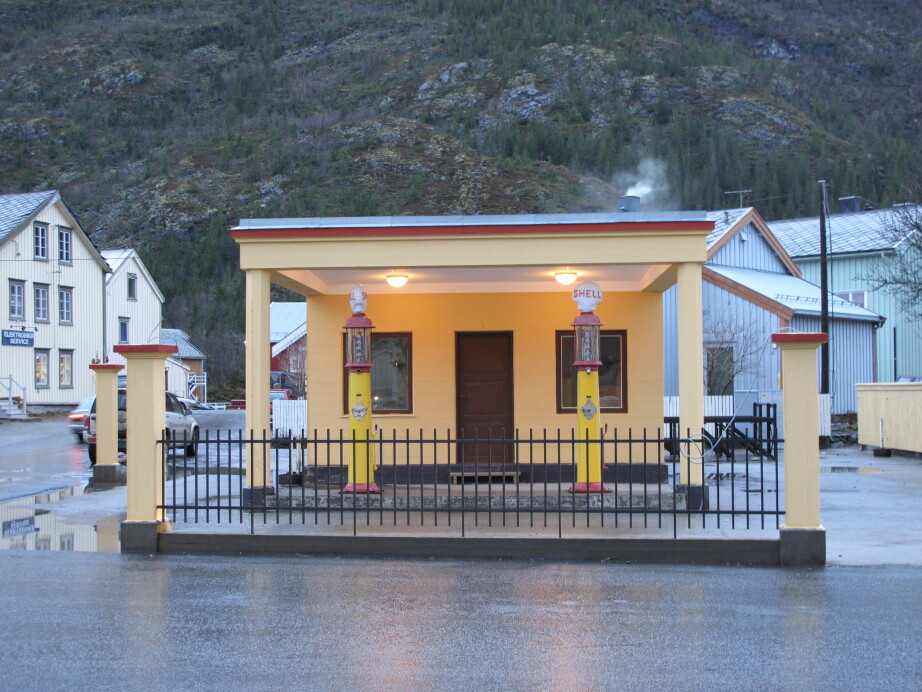
America came to Norway
Then something happened around 1950.
“In the 1950s, Norwegians for the first time became really familiar with international brands. Even before Coca-Cola and Donald Duck, Shell, Esso and BP became brands that people recognized,” Reiten says.
“This was something completely new for consumers.”
The logos and colours at the stations and staff uniforms now had a very thought-out and deliberate design. The placement of motor oil and spark plug boxes inside the station was meticulously planned.
If you drove into a petrol station in Norway in the 1950s and 60s, you would also encounter employees who offered carefully rehearsed services.
“This was also something completely new for Norwegian consumers. They were used to having to ask for things, whether it was goods or services they wanted to buy,” Reiten said.
The oil companies and petrol station brands competed hard to be the best at offering service, says Reiten. Without being asked, the staff at the station checked your automobile’s light bulbs, engine oil and windscreen wipers. The underlying goal of course, was to be able to sell you something.
“This was America, come to Norway,” says Reiten.
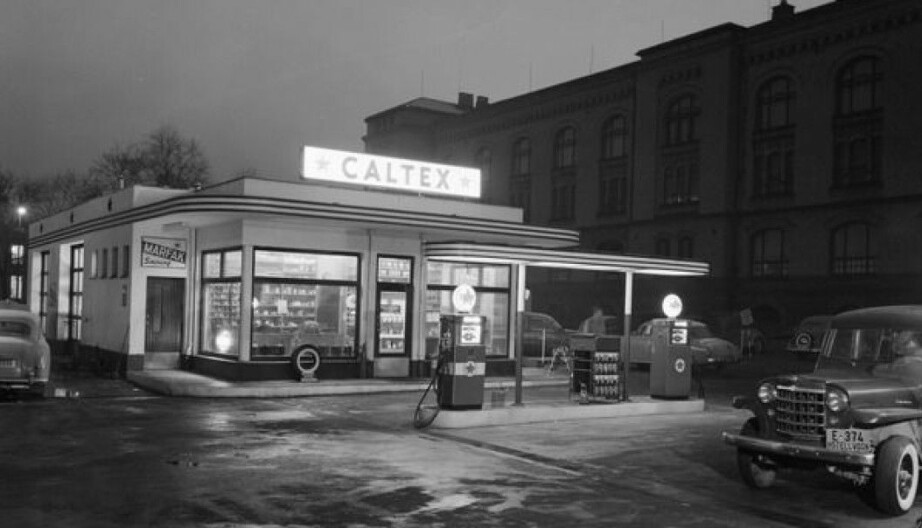
The professionalization of employees
Reiten has also studied internal communications and strategies at the different oil companies.
“The tactic was partly to show that the company was the motorist's friend and cared about both the driver and his car. But companies could also gamble on your fear that something bad might happen on your journey, such as problems starting your car or that your engine might quit,” he said.
Reiten says that nothing at petrol stations was left to chance. The battle for motorists and their money was fierce.
“A company like Esso built its own building for training and sent hundreds of employees to school for weeks to teach them to streamline their petrol stations. In the period from 1950 to 1970, there was tremendous professionalization among employees at Norwegian petrol stations,” he said.

Next came camping chairs
Starting around 1950, sales goods begin to make serious inroads at petrol stations.
The marketing of these products involved strong design, whether they were light bulbs or car batteries. Most of the products on offer were related to the automobile and its use.
“Everything a car needed on a daily basis was now on sale at the petrol station — but little else,” says Reiten.
A little later in the 1960s, products intended for the motorist's family were also commonly found inside the station. First and foremost, customers could buy what they needed for holidays and leisure— including camping stoves, camping chairs and wool blankets.
The company BP was the first to introduce its concept Autoshop. Then Mobil followed with what it called the Minimart.

By the 1970s, petrol stations contained more and more kiosk goods.
This incursion of consumer goods usually started carefully, with an ice cream counter and perhaps soda sales. Then came chocolate, packets of biscuits, magazines and everything else.
As a consequence, petrol stations grew larger. In the 1950s, 40 square metres was considered the ideal size for a station's structure. Soon the area would double.
Nothing was left to chance
At Hunderfossen, a little north of Lillehammer, the Norwegian Road Museum has now rebuilt a Mobil station, which older Lillehammer residents may remember standing in the centre of the city until the mid-1960s.
The museum presents the station as it looked in the 1960s.
The Mobil station was taken over by the museum from an owner who had taken care of it at Nordseter, just outside the city. It was picked up and transported to Hunderfossen at night. It took two years of restoration work before it was ready to be exhibited.
The Mobil station is a good example of how extremely well planned everything was when the first petrol stations were built. Nothing was left to chance.
Everything was done professionally.
Maybe that's why many people think these first petrol stations are so fun to look at, and that people now want to preserve some of them.
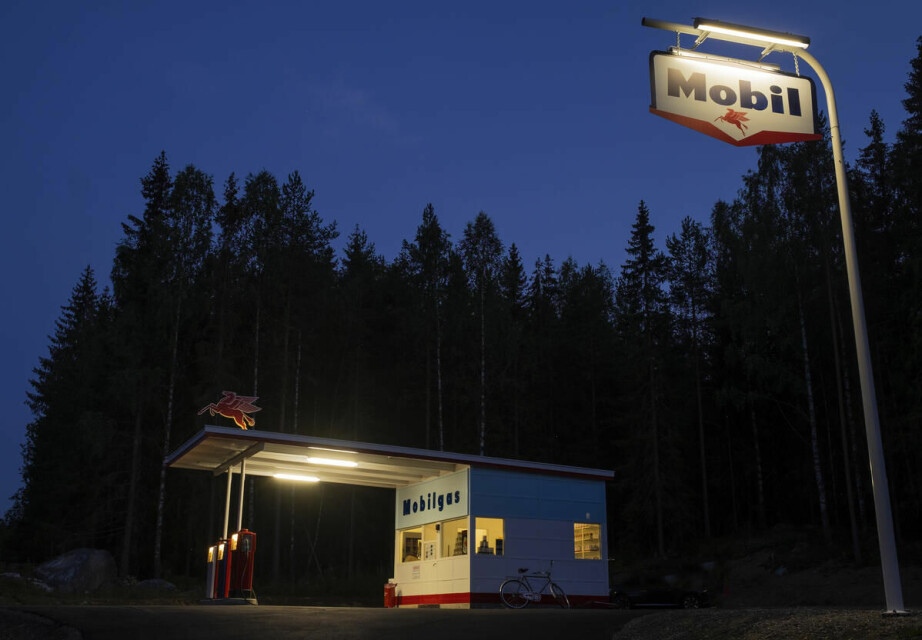
Build brand loyalty
If you are of a certain age today, you might remember that your father (because it was almost certainly him) often filled the car with petrol from the same brand.
It was either Shell or Esso or Mobil or BP. Or maybe at Fina or Caltex.
The purpose of all the well-planned marketing was precisely to create loyal customers who returned to the same stations time and time again.
It's a marketing tactic called brand loyalty.
The oil companies also didn’t hesitate to involve children in their battle for customers. If you were a child in the 1960s or 1970s, you probably remember the small "gifts" you could get at the petrol station if your father bought petrol there. These were often plastic collectibles — such as the popular space coins in the late 1960s, when the Apollo spacecraft were launched.
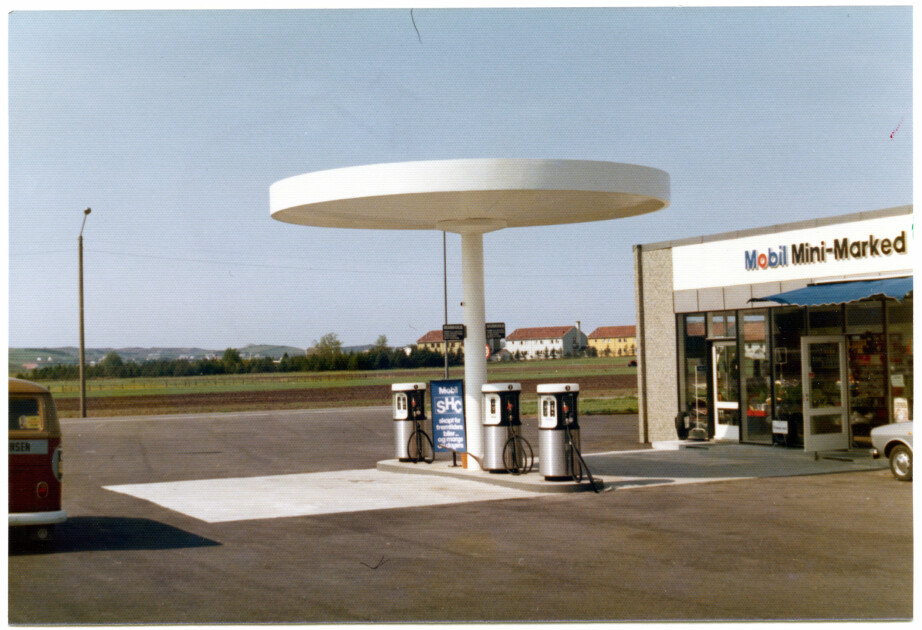
Petrol stations have become convenience stores
Many people who remember the heyday of the petrol station may mourn the disappearance of the beauty of old petrol stations.
Today, petrol stations have become convenience stores. Sales of soft drinks and burgers have become as important as the car and petrol.
And store employees are very knowledgeable about hot dogs and their different toppings.
But if you need engine oil, light bulbs and windscreen wipers, you need to know what to do yourself, or you’ll have to go to an automobile repair shop to get help.
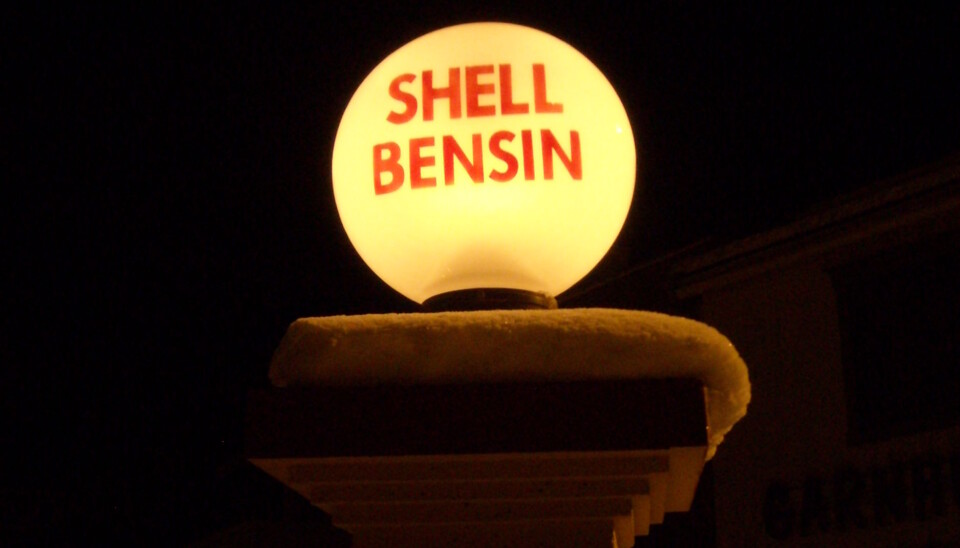
Translated by Nancy Bazilchuk
———































